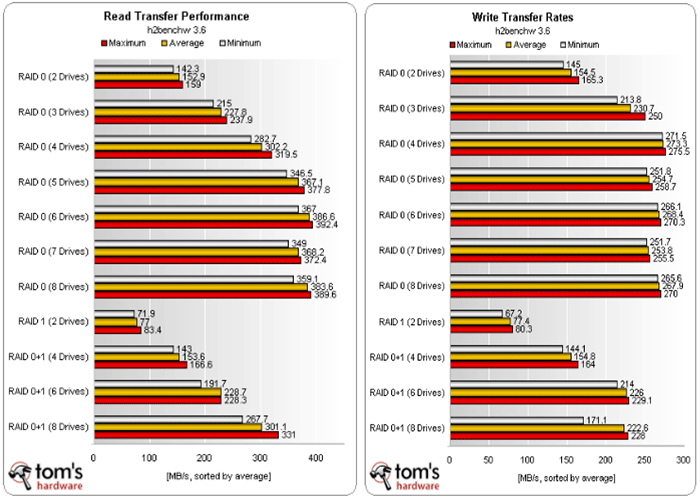Using SSDs in RAID configurations offers significant benefits such as enhanced performance, improved data security, and increased reliability, but also presents certain challenges related to cost, wear management, and data recovery complexity.
Benefits:
-
Performance Boost: SSD RAID arrays can deliver sequential read/write speeds approximately twice that of a single SSD, outperforming traditional HDD RAID setups. This makes SSD RAID ideal for applications requiring high I/O performance, such as servers and workstations.
-
Data Security and Redundancy: RAID configurations distribute data across multiple SSDs, allowing data recovery if one drive fails. This redundancy enhances data protection compared to using a single SSD, which risks total data loss if damaged.
-
Reliability and Endurance: SSD RAID can tolerate one or more drive failures depending on the RAID level, with the system rebuilding data after replacement. This improves overall system uptime and data availability.
-
Power Efficiency and Durability: SSDs consume less power and generate less heat than HDDs, contributing to energy savings and potentially longer hardware lifespan in RAID arrays.
Challenges:
-
Cost: SSDs are significantly more expensive than HDDs, making large RAID arrays costly, especially for budget-conscious or large-scale deployments.
-
Write Endurance and Wear: SSDs have limited write cycles. RAID levels involving parity (e.g., RAID 5, RAID 6) can increase write operations, accelerating wear. Careful selection of RAID levels and wear management techniques (like wear leveling) are necessary to prolong SSD lifespan.
-
Complexity and Compatibility: Setting up SSD RAID can be complex, requiring compatible RAID controllers—older hardware may not support SSDs well. Dedicated hardware RAID controllers generally outperform software RAID solutions.
-
Data Recovery Difficulties: Recovering data from failed SSD RAID arrays is more complicated than from HDD RAID due to SSD-specific failure modes and data management techniques, necessitating specialized recovery tools and expertise.
-
Uniformity of Drives: For optimal performance and reliability, it is recommended to use SSDs of the same brand, model, and capacity within a RAID array. Mixing different SSDs can degrade performance to the level of the slowest drive.
In summary, SSD RAID configurations provide high-speed, reliable, and energy-efficient storage solutions suitable for demanding environments but require careful planning regarding RAID level choice, cost, and maintenance to mitigate SSD wear and recovery challenges.




















WebSeoSG offers the highest quality website traffic services in Singapore. We provide a variety of traffic services for our clients, including website traffic, desktop traffic, mobile traffic, Google traffic, search traffic, eCommerce traffic, YouTube traffic, and TikTok traffic. Our website boasts a 100% customer satisfaction rate, so you can confidently purchase large amounts of SEO traffic online. For just 40 SGD per month, you can immediately increase website traffic, improve SEO performance, and boost sales!
Having trouble choosing a traffic package? Contact us, and our staff will assist you.
Free consultation